Related Research Articles
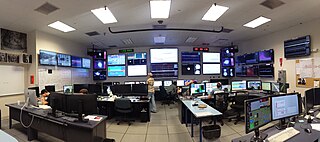
The Laser Interferometer Gravitational-Wave Observatory (LIGO) is a large-scale physics experiment and observatory designed to detect cosmic gravitational waves and to develop gravitational-wave observations as an astronomical tool. Two large observatories were built in the United States with the aim of detecting gravitational waves by laser interferometry. These observatories use mirrors spaced four kilometers apart which are capable of detecting a change of less than one ten-thousandth the charge diameter of a proton.
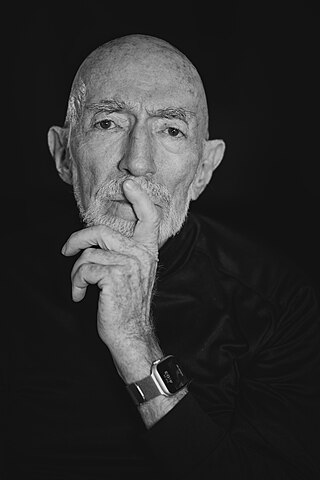
Kip Stephen Thorne is an American theoretical physicist known for his contributions in gravitational physics and astrophysics.

Rainer "Rai" Weiss is an American physicist, known for his contributions in gravitational physics and astrophysics. He is a professor of physics emeritus at MIT and an adjunct professor at LSU. He is best known for inventing the laser interferometric technique which is the basic operation of LIGO. He was Chair of the COBE Science Working Group.

The Max Planck Institute for Gravitational Physics is a Max Planck Institute whose research is aimed at investigating Einstein's theory of relativity and beyond: Mathematics, quantum gravity, astrophysical relativity, and gravitational-wave astronomy. The institute was founded in 1995 and is located in the Potsdam Science Park in Golm, Potsdam and in Hannover where it closely collaborates with the Leibniz University Hannover. Both the Potsdam and the Hannover parts of the institute are organized in three research departments and host a number of independent research groups.

GEO600 is a gravitational wave detector located near Sarstedt, a town 20 km to the south of Hanover, Germany. It is designed and operated by scientists from the Max Planck Institute for Gravitational Physics, Max Planck Institute of Quantum Optics and the Leibniz Universität Hannover, along with University of Glasgow, University of Birmingham and Cardiff University in the United Kingdom, and is funded by the Max Planck Society and the Science and Technology Facilities Council (STFC). GEO600 is capable of detecting gravitational waves in the frequency range 50 Hz to 1.5 kHz, and is part of a worldwide network of gravitational wave detectors. This instrument, and its sister interferometric detectors, when operational, are some of the most sensitive gravitational wave detectors ever designed. They are designed to detect relative changes in distance of the order of 10−21, about the size of a single atom compared to the distance from the Sun to the Earth. Construction on the project began in 1995.

Ronald William Prest Drever was a Scottish experimental physicist. He was a professor emeritus at the California Institute of Technology, co-founded the LIGO project, and was a co-inventor of the Pound–Drever–Hall technique for laser stabilisation, as well as the Hughes–Drever experiment. This work was instrumental in the first detection of gravitational waves in September 2015.

The Kamioka Gravitational Wave Detector (KAGRA), is a large interferometer designed to detect gravitational waves predicted by the general theory of relativity. KAGRA is a Michelson interferometer that is isolated from external disturbances: its mirrors and instrumentation are suspended and its laser beam operates in a vacuum. The instrument's two arms are three kilometres long and located underground at the Kamioka Observatory which is near the Kamioka section of the city of Hida in Gifu Prefecture, Japan.

The Virgo interferometer is a large Michelson interferometer designed to detect gravitational waves predicted by the general theory of relativity. It is located in Santo Stefano a Macerata, near the city of Pisa, Italy. The instrument's two arms are three kilometres long, housing its mirrors and instrumentation inside an ultra-high vacuum.
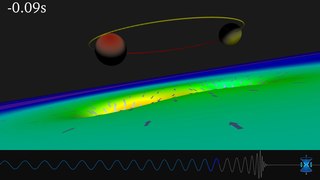
Gravitational waves are waves of the intensity of gravity that are generated by the accelerated masses of an orbital binary system, and propagate as waves outward from their source at the speed of light. They were first proposed by Oliver Heaviside in 1893 and then later by Henri Poincaré in 1905 as waves similar to electromagnetic waves but the gravitational equivalent.

A gravitational-wave detector is any device designed to measure tiny distortions of spacetime called gravitational waves. Since the 1960s, various kinds of gravitational-wave detectors have been built and constantly improved. The present-day generation of laser interferometers has reached the necessary sensitivity to detect gravitational waves from astronomical sources, thus forming the primary tool of gravitational-wave astronomy.
The LIGO Scientific Collaboration (LSC) is a scientific collaboration of international physics institutes and research groups dedicated to the search for gravitational waves.
The Australian International Gravitational Observatory (AIGO) is a research facility located near Gingin, north of Perth in Western Australia. It is part of a worldwide effort to directly detect gravitational waves. Note that these are a major prediction of the general theory of relativity and are not to be confused with gravity waves, a phenomenon studied in fluid mechanics.
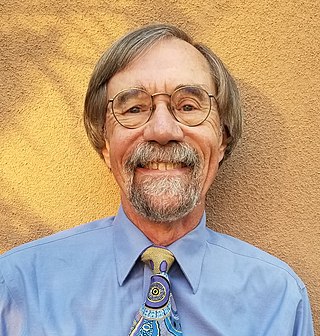
Carlton Morris Caves is an American theoretical physicist. He is currently professor emeritus and research professor of physics and astronomy at the University of New Mexico. Caves works in the areas of physics of information; information, entropy, and complexity; quantum information theory; quantum chaos, quantum optics; the theory of non-classical light; the theory of quantum noise; and the quantum theory of measurement. He is a Fellow of the American Physical Society and of the American Association for the Advancement of Science and is a member of the US National Academy of Sciences.

Alessandra Buonanno is an Italian naturalized-American theoretical physicist and director at the Max Planck Institute for Gravitational Physics in Potsdam. She is the head of the "Astrophysical and Cosmological Relativity" department. She holds a research professorship at the University of Maryland, College Park, and honorary professorships at the Humboldt University in Berlin, and the University of Potsdam. She is a leading member of the LIGO Scientific Collaboration, which observed gravitational waves from a binary black-hole merger in 2015.
David Howard Reitze is an American laser physicist who is professor of physics at the University of Florida and served as the scientific spokesman of the Laser Interferometer Gravitational-Wave Observatory (LIGO) experiment in 2007-2011. In August 2011, he took a leave of absence from the University of Florida to be the Executive Director of LIGO, stationed at the California Institute of Technology, Pasadena, California. He obtained his BA in 1983 from Northwestern University, his PhD in physics from the University of Texas at Austin in 1990, and had positions at Bell Communications Research and Lawrence Livermore National Laboratory, before taking his faculty position at the University of Florida. He is a Fellow of the American Physical Society, the Optical Society, and the American Association for the Advancement of Science.
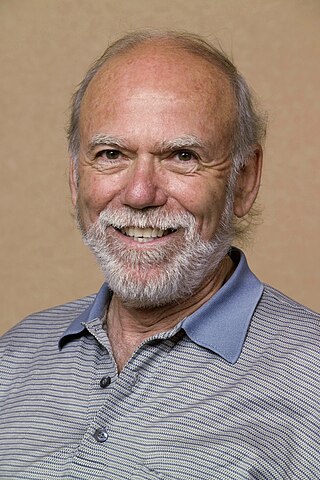
Barry Clark Barish is an American experimental physicist and Nobel Laureate. He is a Linde Professor of Physics, emeritus at California Institute of Technology and a leading expert on gravitational waves.

Gabriela Ines González, is a professor of physics and astronomy at the Louisiana State University and was the spokesperson for the LIGO Scientific Collaboration from March 2011 until March 2017.
Stanley Ernest Whitcomb is an American physicist and was the chief scientist at the Laser Interferometer Gravitational-Wave Observatory (LIGO) project when the first direct detection of gravitational waves was made in September 2015.

Rana X. Adhikari is an American experimental physicist. He is a professor of physics at the California Institute of Technology (Caltech) and an associate faculty member of the International Centre for Theoretical Sciences of Tata Institute of Fundamental Research (ICTS-TIFR).
Jess McIver is an American astronomer. She is an Associate Professor and Tier 2 Canada Research Chair in Gravitational Wave Astrophysics in the Department of Physics and Astronomy at the University of British Columbia. McIver is a member of LIGO, one of the recipients of the Science 2017 Breakthrough of the Year.
References
- ↑ "Peter R. Saulson". College of Arts & Sciences at Syracuse University. Retrieved 2 May 2021.
- 1 2 3 Clavin, Whitney (January 26, 2017). "National Academy of Sciences Honors LIGO Researchers". LIGO Lab: Caltech. Retrieved 2 May 2021.
- 1 2 O'Brien, John (15 February 2016). "Einstein discovery an emotional payoff for SU researcher". Syracuse Post-Standard . Retrieved 2 May 2021.
- 1 2 Enslin, Rob (January 26, 2017). "Physicist to be Recognized by National Academy of Sciences". SU News. Retrieved 2 May 2021.
- ↑ Holmes, Judy (February 7, 2008). "SU alumnus and family endow physics professorship, graduate fellowship". SU News. Retrieved 2 May 2021.
- 1 2 Byrnes, Edward (October 9, 2003). "Peter R. Saulson honored as Syracuse University's 2003-04 University Scholar/Teacher of the Year". SU News. Retrieved 2 May 2021.
- ↑ "APS Fellow Archive". www.aps.org. American Physical Society . Retrieved 2 May 2021.
- ↑ "Gabriela González, David Reitze, and Peter Saulson". National Academy of Sciences . Retrieved 2 May 2021.